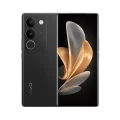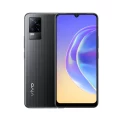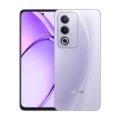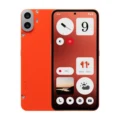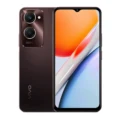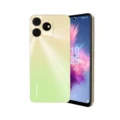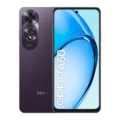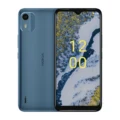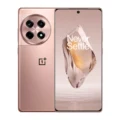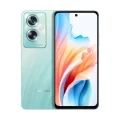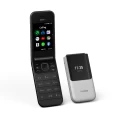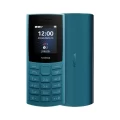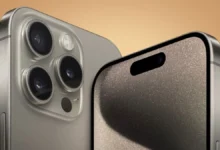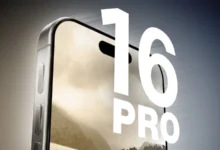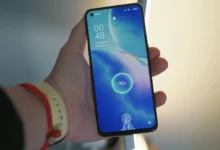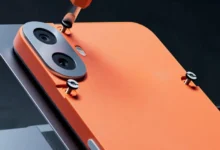Vivo V20
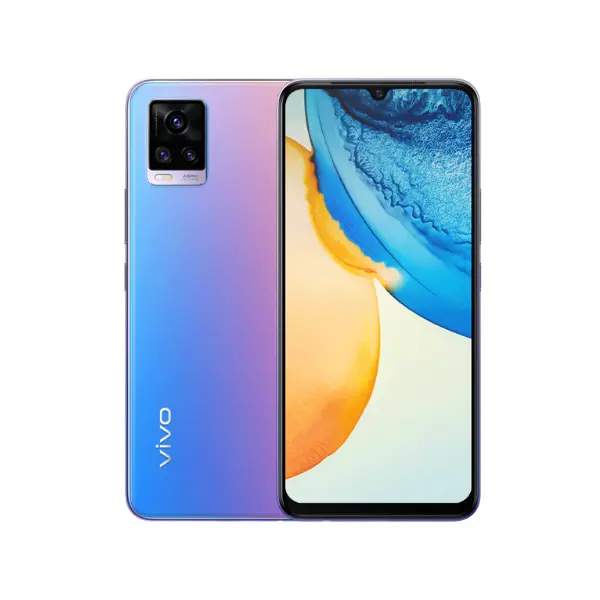


-
Display: 6.44 inches (16.36 cm)
-
CPU: Qualcomm Snapdragon 720G
-
RAM: 8GB
-
ROM: 128GB
-
Camera: 64MP
-
Battery: 4000 mAh
Specifications
General
| Name | Vivo V20 |
| Brand | Vivo |
| Model | V20 |
| Announced | 30 September, 2020 |
| Release Date | 19 October, 2020 |
| Manufacturer Manufacturer Company: A manufacturer is a company engaged in the production of products. | vivo |
| Made in Made in: Made in is a label or indication on a product that specifies the country where the product was manufactured or produced. | China |
Display
| Display Type | AMOLED |
| Screen Size | 6.44 inches (16.36 cm) |
| Resolution | 1080 x 2400 pixels |
| Aspect Ratio | 20:9 |
| Pixel Density Pixel Density: Pixels per inch and pixels per centimetre are measurements of the pixel density of an electronic image device, such as a computer monitor or television display, or image digitizing device such as a camera or image scanner. | 409 ppi |
| Refresh Rate | 60 Hz |
| Multitouch Multitouch: Smartphone multitouch is a technology that allows the screen to recognize and respond to multiple touch points simultaneously. It enables users to perform gestures like pinch-to-zoom, rotation, and swiping with multiple fingers, enhancing the overall interactivity and usability of the device. | |
| Color Depth Color Depth: Color depth or colour depth, also known as bit depth, is either the number of bits used to indicate the color of a single pixel, or the number of bits used for each color component of a single pixel. When referring to a pixel, the concept can be defined as bits per pixel. | 16.7 million colors (8-bit) |
| Bezel-less Display Bezel-less display: A bezel-less display minimizes or eliminates the non-display areas around the screen, providing a sleek, immersive look and maximizing the visual experience. | Yes, with a waterdrop notch |
| Brightness | 1300 nits |
| Screen Protection Screen Protection: Display protection refers to the various technologies and materials used to safeguard a smartphone's screen from damage such as scratches, cracks, and impacts. | No |
| Screen to Body Ratio Screen-to-body ratio: Percentage of a device's front surface occupied by the display, indicating how efficiently the space is used for the screen. Higher ratios mean more immersive displays. | 90.37% |
Design
| Height | 161.3 mm |
| Width | 74.2 mm |
| Thickness | 7.3 mm |
| Weight | 171g |
| Material Built Material: The physical construction materials of a smartphone, influence its durability, weight, and aesthetic qualities. Common materials include metal, glass, plastic, ceramic, etc. | Mineral Glass |
| Colors | Sunset Melody, Midnight Jazz |
| Waterproof | No |
| Ruggedness | Dustproof |
Camera
| Rear Camera | Triple |
| Resolution |
64 MP f/1.89, Wide Angle, Primary Camera 8 MP f/2.2, Ultra-Wide Angle Camera 2 MP f/2.4, Mono Camera |
| Autofocus | Yes, Phase Detection autofocus |
| OIS Optical Image Stabilization (OIS): OIS in smartphones is a technology designed to reduce the blurriness of photos and videos caused by hand movements or vibrations. It works by physically adjusting the camera lens or sensor to compensate for these movements. | No |
| Rear Flash | Yes, Dual-color LED Flash |
| Image Resolution | 9000 x 7000 Pixels |
| Settings | Exposure compensation, ISO control |
| Shooting Modes |
Continuous Shooting High Dynamic Range mode (HDR) |
| Camera Features | Digital Zoom, Auto Flash, Face detection, Touch to focus |
| Video Capture |
3840x2160 @ 30 fps 1920x1080 @ 60 fps |
| Front Camera | Single |
| Resolution | 44 MP f/2.0, Wide Angle, Primary Camera |
| Front Flash | Yes, the Screen flash |
| Video Capture |
3840x2160 @ 30 fps 1920x1080 @ 30 fps |
Battery
| Capacity Battery Capacity: Battery capacity in smartphones refers to the amount of energy a battery can store, typically measured in milliampere-hours (mAh). It indicates how long a battery can power the device before needing a recharge. | 4000 mAh |
| Battery Type | Li-ion |
| Removable Removable Battery: A removable battery in a smartphone is a battery that users can easily take out and replace without tools. Removable batteries were more common in older models; modern smartphones favor non-removable batteries for sleeker designs and better water resistance. | |
| Fast Charging | 33W FlashCharge (65% in 30 minutes) |
Performance
| Chipset Chipset: In smartphones, the chipset is like the device's brain, controlling everything from processing tasks to managing connectivity. It includes the CPU, GPU, modem, and other components, determining the device's performance and capabilities. Different smartphones use different chipsets made by companies like Qualcomm or MediaTek. | Qualcomm Snapdragon 720G |
| CPU CPU (Central Processing Unit): The CPU, commonly known as the processor, is responsible for processing instructions to perform various functions that enable a device to operate properly. Often described as the brain of computers, smartphones, and tablets, the CPU plays a crucial role in executing tasks and running applications on these devices. Smartphones and tablets rely heavily on their processors to carry out every task, from running apps to managing system operations. Therefore, the processor is an incredibly important factor to consider when selecting any type of computing device, including smartphones. | Octa-core (2.3 GHz, Dual-core, Kryo 465 + 1.8 GHz, Hexa Core, Kryo 465) |
| Architecture Instruction Set Architectures (ISAs): In the context of smartphones, "architecture" refers to the design and structure of the processor, which determines how it processes information and executes instructions. This encompasses the processor's instruction set, memory management, and overall design principles. One common term related to architecture is "64-bit architecture," which has significant implications for performance and capabilities. | 64 bit |
| Fabrication Semiconductor Fabrication: Fabrication in the context of semiconductors and microprocessors refers to the process of manufacturing integrated circuits (ICs) or chips. This involves creating the physical structures of a chip, such as transistors and other electronic components, on a silicon wafer. The term "fabrication" is often used interchangeably with "process node" or "technology node," which indicates the manufacturing technology used to create these chips. | 8 nm |
| GPU GPU (Graphics Processing Unit): The GPU in a smartphone is a specialized processor designed to handle the rendering of images, animations, and video, as well as other tasks involving graphics and visual data. It works alongside the CPU (Central Processing Unit) to deliver a smooth and visually rich experience. | Adreno 618 |
| RAM Random Access Memory (RAM): RAM is a type of computer memory that is used to store data temporarily while a device is in use. RAM is a critical component in smartphones, enabling fast access to data, smooth multitasking, and efficient operation of applications. The amount and type of RAM can significantly impact the performance and user experience of a smartphone. | 8GB |
| RAM Type | LPDDR4X |
| User Interface User interface (UI): A custom user interface (UI) is a layer of software that manufacturers often develop on top of the base operating system to differentiate their devices, enhance user experience, and add unique features. Custom UIs provide additional functionalities, themes, and design elements that are not present in the stock OS. | Funtouch OS |
| Operating System Operating System (OS): The operating system is the core software that manages all the hardware and software resources on a smartphone. It provides a platform for running applications and controls basic functions such as managing memory, processing tasks, and handling input/output operations. | Android v11 |
Storage
| ROM ROM (Read-Only Memory): In the context of smartphones and other electronic devices, ROM typically refers to the built-in storage where the operating system, system files, and pre-installed apps are stored. | 128GB |
| MicroSD Card MicroSD Card Slot: A microSD card is a small, portable storage device used to expand the storage capacity of electronic devices, including smartphones, tablets, digital cameras, and more. It's inserted into a device's MicroSD card slot to store extra photos, videos, music, and other data. | Yes, microSDXC (dedicated slot) |
| Expandable Storage | Yes, Up to 1 TB |
| Storage Type Storage Type: In smartphones, storage types typically include built-in eMMC or UFS (Universal Flash Storage) for internal storage, and expandable storage options like MicroSD cards. | eMMC 5.1 |
Network
| Number of SIM | Dual SIM |
| SIM Size | Nano |
| SIM Slot Type | 2 Nano-SIM + 1 Micro SD |
| Network Support | 2G, 3G, 4G |
| Network Speed | HSPA 42.2/5.76 Mbps, LTE-A |
| Technology | GSM / CDMA / HSPA / LTE |
| VoLTE VoLTE (Voice over LTE): VoLTE is a technology that allows voice calls to be made over a 4G LTE network, rather than the traditional 2G or 3G networks. In summary, VoLTE enhances call quality and functionality by using the 4G LTE network for voice communications. | |
| 2G Bands 2G (Second Generation): 2G is a wireless technology standard for mobile telecommunications that was introduced in the 1990s and enabled the transmission of digital voice and data services, using digital transmission instead of analog. It has slower data speeds compared to later generations like 3G and 4G. | GSM 1800 / 1900 / 850 / 900 MHz |
| 3G Bands | UMTS 1900 / 2100 / 850 / 900 MHz |
| 4G Bands |
TD-LTE 2600(band 38) / 2300(band 40) / 2500(band 41) FD-LTE 2100(band 1) / 1800(band 3) / 900(band 8) / 850(band 5) |
| GPRS GPRS (General Packet Radio Service): General Packet Radio Service is a packet-oriented mobile data standard on 2G and 3G cellular communication networks' global system for mobile communications (GSM). In summary, GPRS is a mobile data service that enhances the data capabilities of 2G and 3G networks, providing basic internet and multimedia services. | |
| EDGE EDGE (Enhanced Data rates for GSM Evolution): Enhanced Data rates for GSM Evolution is a technology used to improve the data transmission rates of 2G GSM networks. In summary, EDGE boosts the data transmission capabilities of 2G networks, providing faster speeds and improved performance for mobile internet access. |
Connectivity
| Wi-Fi Wi-Fi: Wi-Fi is a wireless networking technology that allows electronic devices to connect to a local area network (LAN) wirelessly, typically using the 2.4 gigahertz (GHz) or 5 GHz radio frequency bands. | Yes, Wi-Fi 5 (802.11 b/g/n/ac) 5GHz |
| Wi-Fi Features | Mobile Hotspot |
| Bluetooth | Yes, Bluetooth v5.1 |
| GPS GPS (Global Positioning System): GPS originally Navstar GPS, is a satellite-based radio navigation system. It is a satellite-based radio navigation system, GPS permits users to determine their position, velocity, and the time 24 hours a day, in all weather, anywhere in the world, In order to locate your position, your device or GPS receiver must have a clear view of the sky. | Yes with A-GPS, Glonass |
| NFC NFC (Near Field Communication): NFC is a wireless technology that enables devices like smartphones and payment terminals to communicate when they're close together, facilitating contactless transactions and data transfer. | No |
| OTG OTG (On-The-Go): The full form of OTG is On-The-Go . OTG is a USB (Universal Serial Bus) standard that allows USB devices to be connected. Without using a computer connection, USB OTG items can connect. You can connect your mobile phone or tablet to various gadgets using a USB OTG link. | Yes |
| Browser Browser: A browser is a software application used to access and view information on the World Wide Web. It allows users to navigate through websites, view web pages, and interact with various online content such as text, images, videos, and other multimedia resources. | HTML5 |
| IR Blaster Infrared (IR) blaster: Some smartphones may come with an infrared (IR) blaster, which allows your smartphone to act as a universal remote control for controlling other devices, such as TVs, set-top boxes, and home appliances, that use infrared technology for communication. | No |
| USB Interface | USB Type-C, Mass storage device, USB charging |
Sensors
| Fingerprint Fingerprint: A fingerprint, in the context of smartphones and other devices, refers to a biometric authentication method that uses the unique patterns on a person's fingertip to verify their identity. | |
| Face Unlock Facial Recognition: Face Unlock is a biometric authentication feature found in many smartphones. It uses facial recognition technology to identify and authenticate users, allowing them to unlock their devices simply by looking at the front-facing camera. | |
| Other Sensors | Accelerometer, Ambient light sensor, Proximity Sensor, E-compass, Gyroscope (Entity) |
Multimedia
| FM Radio | |
| Loudspeaker | Yes |
| Earphone Jack | 3.5 mm |
| Voice Recorder | Yes |
| Video Playback | MP4, 3GP, AVI, FLV, MKV |
| Audio Playback | WAV, MP3, MP2, MIDI, Vorbis, APE, FLAC |
| Video Formats | MP4 |
| Image Formats | JPEG, PNG, WEBP, and GIF |
The Vivo V20 is a mid-range smartphone that offers a great balance between features and affordability. One of the key highlights of this phone is its camera, which comes with a host of features that make it ideal for photography enthusiasts. In this blog post, we’ll take a closer look at what makes the Vivo V20 such a great phone for photography, and why it’s worth considering if you’re looking for a new smartphone.
VIVO V20 DETAILS
Design and Display
The Vivo V20 comes with a sleek and stylish design that is both premium and ergonomic. The phone features a 6.44-inch Full HD+ AMOLED display with a resolution of 2400×1080 pixels, which offers vivid colors and deep blacks. The display also has a high refresh rate of 60Hz, which makes it perfect for gaming and scrolling through social media feeds.
The phone has a waterdrop-style notch at the top of the display, which houses the 44MP front camera. The rear panel of the phone has a frosted glass finish that looks and feels great in the hand. The camera module is located at the top-left corner of the back panel, which gives the phone a unique and distinctive look.
Camera Features
The camera is one of the standout features of the V20, and it’s easy to see why. The phone features a triple-camera setup at the back, which includes a 64MP primary camera, an 8MP ultra-wide camera, and a 2MP monochrome sensor. The primary camera uses a Sony IMX 682 sensor and supports 4K video recording at 30fps.
One of the key features of the camera is the Super Night mode, which allows you to capture stunning low-light photos with great detail and clarity. The camera also comes with a host of other features, including a Pro mode, which lets you adjust settings like ISO, shutter speed, and exposure manually.
The 44MP front camera is also a great addition, and it comes with features like Eye Autofocus and Super Night Selfie mode. The camera can capture great selfies even in low-light conditions, which is a big plus for social media enthusiasts.
Performance and Battery Life
The Vivo V20 is powered by a Qualcomm Snapdragon 720G processor, which is a mid-range chipset that offers good performance for everyday use. The phone comes with 8GB of RAM and 128GB of internal storage, which is expandable up to 1TB using a microSD card.
The phone runs on Android 11 with Vivo’s FunTouch OS 11 skin on top, which offers a clean and intuitive user interface. The phone also supports 5G connectivity, which makes it future-proof and ready for the next generation of mobile networks.
The V20 comes with a 4000mAh battery that supports 33W fast charging. The battery life is good, and the phone can easily last a full day with moderate usage. The fast charging feature is also a big plus, as it allows you to quickly charge the phone when you’re in a hurry.
Pros and Cons of Vivo V20
The Vivo V20 is a mid-range smartphone that offers a great balance between features and affordability. While it has a lot of great features, there are also some drawbacks to consider before making a purchase. In this section, we’ll take a closer look at the pros and cons of the Vivo V20 to help you decide whether it’s the right phone for you.
| Pros | Cons |
|---|---|
| Sleek and stylish design with a frosted glass finish | No wireless charging support |
| Long-lasting battery with fast charging support | No IP rating for water and dust resistance |
| Vibrant AMOLED display | No display protection |
| Plenty of RAM and storage | Refresh rate locked at 60Hz |
| Powerful camera setup | Could have used a better chipset |
Verdict
The Vivo V20 is a great smartphone for photography enthusiasts who are looking for a mid-range phone that offers great camera features. The phone comes with a sleek and stylish design, a vibrant AMOLED display, and a powerful camera that can capture stunning photos even in low-light conditions. The phone is also packed with features like 5G connectivity, a fast processor, and a long-lasting battery, which make it a great all-around device. Overall, if you’re in the market for a new smartphone and love taking photos, the Vivo V20 is definitely worth considering.
Reviews
Disclaimer Note
The information on this page may not be entirely accurate or up-to-date. Product prices are approximate and may vary based on taxes, import duties, and other factors.


